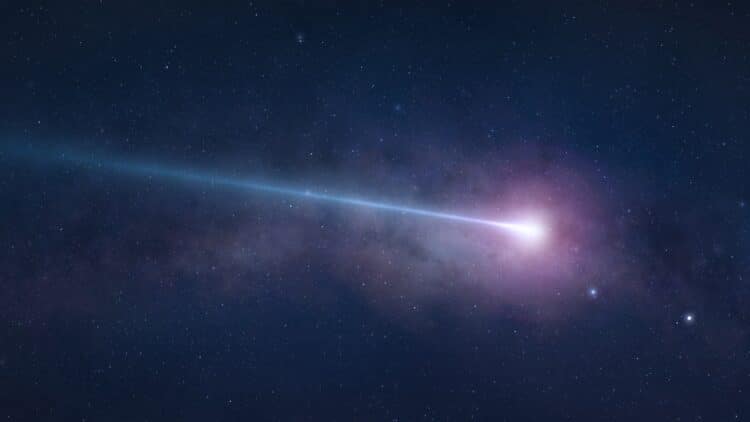We often think that our solar system is a bubble completely isolated from the rest of the universe, but the reality could not be further from the truth. Every once in a while, an “interstellar vagabond” appears, stopping by to say hello to our solar system and exciting the scientific community. In recent years, we have had visits from two such travelers, but now there is a third one that is grabbing all the attention.
We are talking about comet 3I/ATLAS, which is proof that these galactic bodies are more common than previously believed. Its name comes from the fact that it was discovered by the ATLAS system in Chile on July 1, 2025. And this comet is not just a space object, but scientists consider it to be “a time capsule.” It is a fragment of material that is even older than our own sun.
What are interstellar objects?
To better understand the visit of comet ATLAS, we first need to go into detail about what it means to be “interstellar.” First, it means that it was not born in the vicinity of our sun (which is our star). Furthermore, it is an object with a hyperbolic orbit: it is not bound by solar gravity, nor does it revolve around it repeatedly, like us or the other planets in our solar system.
Instead, this traveling comet was ejected from another star system billions of years ago, like a drunk being kicked out of a nightclub. This comet is traveling at full speed and exceeds our star’s escape velocity. And no wonder, since it is traveling at a speed of between 58 and 61 km/s… More than 200,000 km/h.
Science Confirms the Theory
Confirming that this is an interstellar comet and determining its trajectory has been a rigorous task carried out by international teams. One such team was led by Spanish scientist Xabier Pérez Couto, from CITIC at the University of A Coruña.
Not only that, but they have been able to reconstruct the comet’s trajectory over 10 million years through the Milky Way. They used extremely accurate data provided by the ESA’s (European Space Agency) Gaia mission. This is why comet 3I/ATLAS has been labeled a “time capsule.” Analysis suggests that this interstellar object could be between seven and 10 billion years old. Considering that our own sun is only 4.6 billion years old, we are looking at an object that was created in the early Milky Way.
Other interstellar objects
But comet 3I/ATLAS is not the only object that has visited our solar system. The first visitor, ‘Oumuamua, was an elongated object that looked more like a rock without a tail. 3I/ATLAS, however, clearly behaves like a comet: it has a tail of gas and dust, and its brightness and activity confirm that it is icy in nature. However, it has properties that are not very common in comets in our own solar system; telescopes have detected volatile chemistry that includes the rather unusual presence of nickel and cyanide. All of this suggests that it was formed as part of a planet in another part of the galaxy.
But don’t worry, we know what you’re thinking: is it going to hit Earth? The closest it will come to our planet is 270 million kilometers. The comet already passed close to Mars this October, and it will pass close to Jupiter in March 2026 before leaving our solar system forever.
Unfortunately, the comet is too faint for humans to see. Its maximum brightness is around magnitude 12. Only amateur or medium-sized telescopes are capable of observing it. According to experts, it will reappear in early December 2025, when it will be possible to see it in the morning sky.

